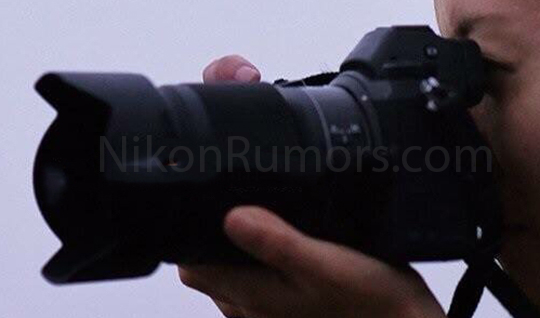Jorgen Udvang
Subscriber Member

If this is the real deal, it's very interesting. It reminds me of the asymetric shape of the Olympus E-1, a camera that it was easy to fall in love with.
Great to see you here. Join our insightful photographic forum today and start tapping into a huge wealth of photographic knowledge. Completing our simple registration process will allow you to gain access to exclusive content, add your own topics and posts, share your work and connect with other members through your own private inbox! And don’t forget to say hi!

We may have a different opinion what good ergonomics means. Is it the number of features? Is it the number of configurable buttons? For me, it is a correlation with the joy of using a cameras. I own and use both Sony A7rIII and Leica CL, and I enjoy using CL much more. It is obvious that many (most?) Sony owners are fine with Sony's ergonomics. Good for them! There are also many who use Sony only grudgingly and/or have sold it, and hope their pet peeves will be addressed in the new Nikon. We will see.I actually think the Sony's are pretty good with respect to ergonomics. Have you ever held the Leica CL? After shooting with APS-C format with a few camera models, I certainly think that FF has a huge advantage in DOF, resolution and printing size. Just give it a hybrid finder Nikon.
Well, Nikon name or not, some of us will demand that our legacy Nikon F mount lenses will fit the camera...... and if you demand that your camera say Nikon on it then you’ll have something to organically hang your hat on.
Judging from native Sony A-mount adapters the possibility that Nikon lenses would work fine with this camera are high but comparing the best Sony FE lenses to the best of the Sony A mount lenses it’s generally worth upgrading to native options as they’re designed for the host body.Well, Nikon name or not, some of us will demand that our legacy Nikon F mount lenses will fit the camera...
...and work, thereby saving us a bunch of money by not having to contemplate changing systems or buying new lenses to fit.
Duff
Resolution is resolution: If a sensor produces 4000x6000 pixel output without interpolation, the sensor's dimensions don't matter. And if the resolution is the same, printing dimensions are the same....After shooting with APS-C format with a few camera models, I certainly think that FF has a huge advantage in DOF, resolution and printing size. ...
If this is the real deal, it's very interesting. It reminds me of the asymetric shape of the Olympus E-1, a camera that it was easy to fall in love with.
No more need to buy a ring light for macro shots
Now that you mention it... it sort of does look like a RX10 but it also sort of looks like a Panasonic G9 too.Looks like a RX10!
I new I had seen something similar before; Nikon's first digital camera, the QV-1000C, launched in 1988, so it's a 40 year anniversary. That's retro with a twist!
If this is the real deal, it's very interesting. It reminds me of the asymetric shape of the Olympus E-1, a camera that it was easy to fall in love with.


Everything else being equal the larger sensor will have an advantage in dynamic range and higher ISO abilities.Resolution is resolution: If a sensor produces 4000x6000 pixel output without interpolation, the sensor's dimensions don't matter. And if the resolution is the same, printing dimensions are the same.
What is an 'advantage' when it comes to DoF? For some an advantage might be more DoF at a given FoV and lens opening, for others the opposite. There's no hard and fast rule for what constitutes an advantage without the context of use and intent.
Remember that one of the highly lauded advantages of the miniature 35mm film format was smaller, faster lenses with much greater DoF in a hand-holdable package that was light and portable, in the context of that time. ...
Very true but not what I was responding to.Everything else being equal the larger sensor will have an advantage in dynamic range and higher ISO abilities.
...
Lovely, a nice mashup of a bit of marketing speak. Good luck to you, JD."A digital sensor with a larger surface area provides the opportunity to include more pixels. Assuming the pixels are the same size, having a digital sensor that is 40% larger, reads that there can be 40% more pixels. That means higher resolution for your images, which in turn means more detail and the ability to make them larger."-DPS. Print size is specifically what I'm referring to when talking about resolution, but that also has a lot to do with size and viewing distance from the print. In addition to better low light, Dynamic Range and less DOF, You also get less diffraction and no crop factor. It's all good cause Nikon is using a FF sensor in their new mirrorless camera. If they do this right, which I think they will, then fast lenses, high FPS, low base ISO, and weather resistance will be featured prominently.
Since I used to write press releases once upon a time, I always like to read them with an eye to eliding the marketing speak that is wriggled into them. This one says, to me:Press release from today:
https://www.nikonusa.com/en/about-n...e-a-New-Dimension-in-Optical-Performance.html
Doesn't really contain any info we didn't already suspect, but it does confirm: FX-format, new lens mount, F-mount adapter
